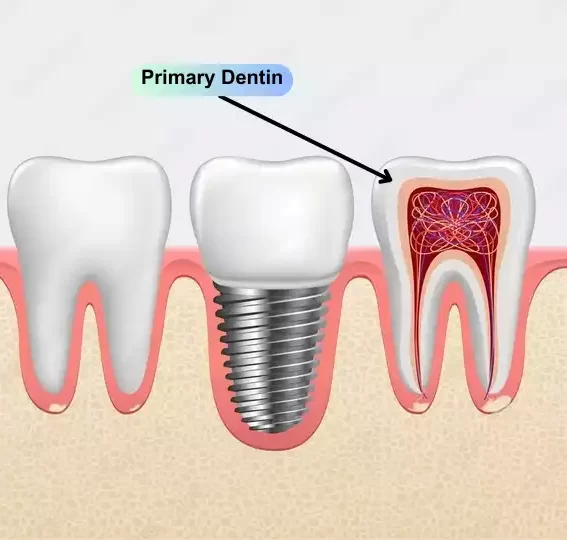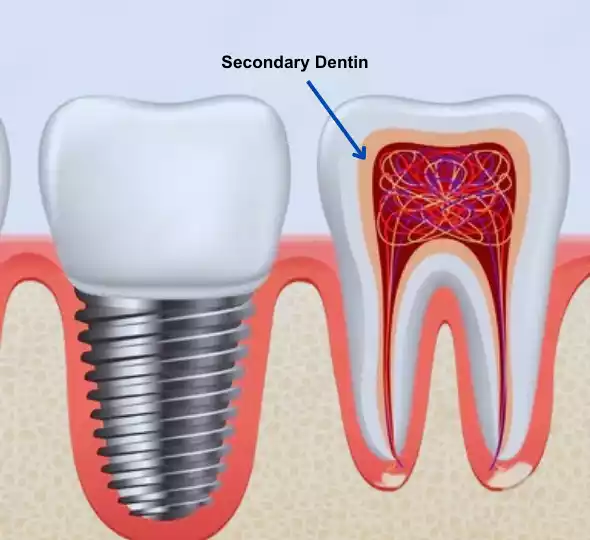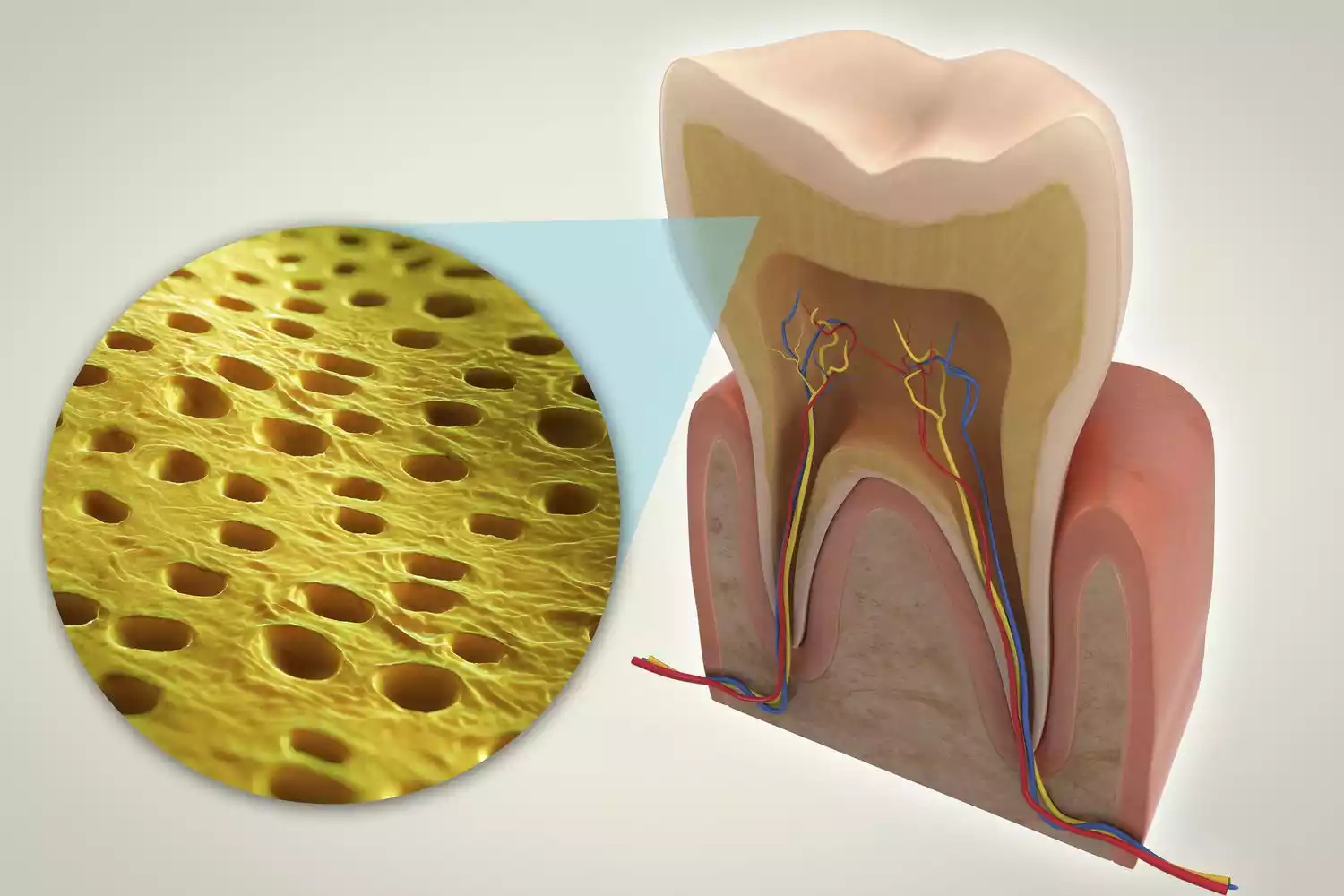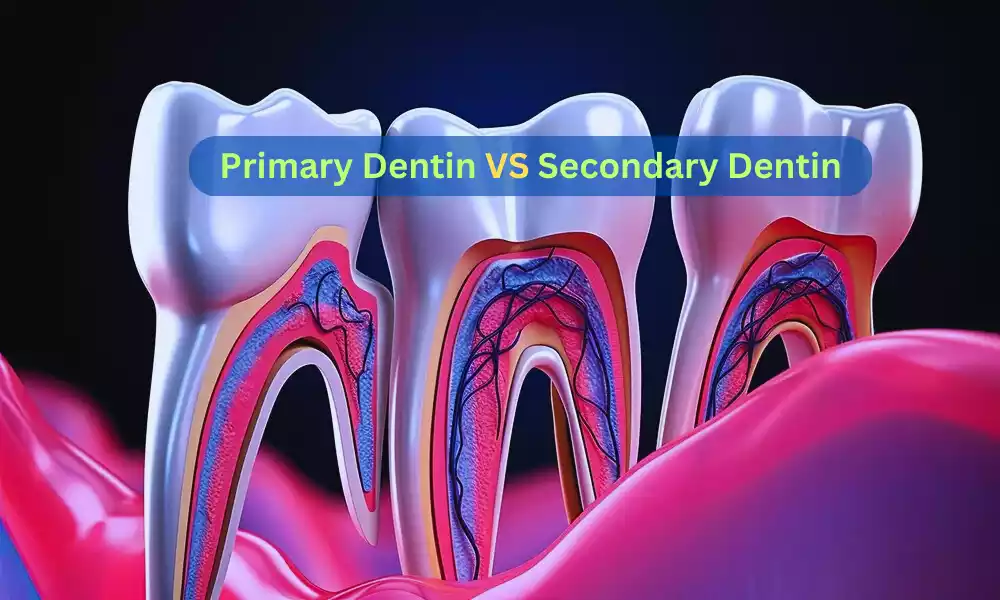Primary and Secondary Dentin are crucial components of tooth structure, each playing distinct roles in dental health and development. Primary dentin, also known as mantle dentin, forms during the initial stages of tooth development and represents the bulk of a tooth’s structure. It is characterized by its high mineral content and organized tubular structure, providing strength and support to the tooth.
Secondary dentin, also called reparative dentin, continues to develop throughout a person’s life as a response to various external factors like aging, dental injuries, or cavities. While secondary dentin has a slightly different tubular arrangement and reduced mineral content compared to primary dentin, its primary function is to protect the sensitive pulp chamber and maintain the tooth’s vitality over time.
Understanding the distinctions between primary and secondary dentin is essential for comprehending the dynamic nature of tooth development and preservation throughout an individual’s lifetime.
What is Primary Dentin?
Primary dentin, also known as mantle dentin or inner dentin, is the initial layer of dentin that forms during the development of a tooth. It is one of the two primary types of dentin found in a tooth, with the other being secondary dentin.

Key characteristics and information about primary dentin include:
- Formation: Primary dentin begins to form during the early stages of tooth development when the tooth is still in its bell stage. It is produced by specialized cells called odontoblasts, which are located in the pulp tissue of the tooth.
- Location: Primary dentin is located just beneath the enamel in the crown of the tooth and around the pulp chamber. It is the dentin that is present from the time the tooth first starts to form until the tooth fully erupts into the oral cavity.
- Composition: Primary dentin has a specific composition characterized by densely packed dentinal tubules and a high mineral content, primarily hydroxyapatite crystals. This composition gives it the strength and hardness necessary for tooth function.
- Function: The primary function of primary dentin is to provide structural support to the tooth and protect the pulp tissue, which contains nerves and blood vessels. It forms the initial framework of the tooth and acts as a protective barrier for the pulp.
- Sensitivity: Primary dentin can transmit sensations, including temperature and pressure, to the pulp. Changes in external stimuli can cause sensitivity in the tooth if primary dentin is exposed due to enamel erosion, gum recession, or other factors.
- Growth: While primary dentin primarily forms during tooth development, it continues to grow slowly throughout a person’s life. However, this growth is minimal compared to the formation of secondary dentin, which occurs in response to external factors.
Primary dentin is the first layer of dentin to develop in a tooth, forming during its initial stages of development. It plays a vital role in the structural integrity and protection of the tooth, particularly in the crown region.
What is Secondary Dentin?
Secondary dentin, also known as reparative dentin, is a layer of dentin that forms in response to various external stimuli or factors after the tooth has erupted into the oral cavity. It serves as a protective mechanism by which the tooth responds to injury, wear, dental caries, or other irritants that may threaten the integrity of the dentin-pulp complex.

Key characteristics and information about secondary dentin include:
- Formation: Secondary dentin forms throughout a person’s life, in contrast to primary dentin, which primarily develops during tooth development. It is produced by odontoblasts, specialized cells located at the innermost layer of the pulp tissue.
- Location: Secondary dentin forms inside the pulp chamber and along the inner walls of the tooth’s root canals. It gradually reduces the size of the pulp chamber as it forms, acting as a protective barrier between the pulp and external irritants.
- Composition: While similar in composition to primary dentin, secondary dentin may have differences in its structure and composition due to the ongoing response to external factors. It may have a less organized arrangement of dentinal tubules and a slightly altered mineral content.
- Function: The primary function of secondary dentin is to protect the dental pulp from harm. It does so by sealing off exposed dentinal tubules, which can occur due to factors such as tooth wear, cavities, or other forms of dental damage. This protective layer helps to maintain the overall health of the pulp.
- Age-Related Growth: The formation of secondary dentin tends to increase with age. As the tooth is exposed to more wear and tear over time, the deposition of secondary dentin becomes more pronounced. This is a natural response to aging and the cumulative effects of external influences on the tooth.
- Clinical Significance: Dentists often consider the presence of secondary dentin when planning dental treatments. It can complicate procedures like root canal therapy, as the increased deposition of secondary dentin can make it more challenging to access and treat the pulp.
Secondary dentin is a protective layer of dentin that forms in response to ongoing external factors and continues to develop throughout a person’s life. It serves to protect the dental pulp from injury and maintain the overall health and function of the tooth.
Importance of dentin in dental health
Dentin plays a crucial role in dental health, as it is a fundamental component of the tooth structure and contributes to various aspects of oral well-being.

Here are the key importance of dentin in dental health:
- Tooth Structure and Support: Dentin forms the bulk of the tooth structure beneath the enamel in the crown and beneath the cementum in the roots. It provides structural support and integrity to the tooth, ensuring that it can withstand the forces of chewing and grinding.
- Protection of Pulp: Dentin serves as a protective layer for the dental pulp, which contains nerves and blood vessels. It acts as a barrier, shielding the pulp from external stimuli, such as temperature changes, pressure, and microbial invasion. Protecting the pulp is essential for maintaining tooth vitality and preventing pain and infection.
- Sensitivity: Dentin contains microscopic tubules that connect to the pulp. When these tubules are exposed, often due to enamel erosion, gum recession, or dental procedures, the tooth can become sensitive to hot, cold, sweet, or acidic substances. Dentin sensitivity can impact oral comfort and quality of life.
- Repair and Defense Mechanism: Secondary dentin, which forms in response to external irritants or injury, helps protect the pulp by sealing off exposed dentinal tubules and reinforcing the tooth structure. This is a natural defense mechanism to preserve tooth health.
- Thermal Insulation: Dentin has insulating properties, which help protect the dental pulp from sudden and extreme temperature changes. This insulation prevents rapid thermal conduction, reducing the risk of pulp injury.
- Transmission of Sensation: Dentin transmits sensory information to the pulp, allowing the tooth to respond to external stimuli. This sensory function helps individuals detect changes in their oral environment, such as changes in food temperature or texture.
- Attachment for Dental Fillings: Dentin provides a substrate for dental fillings (restorations) to adhere to when treating cavities. Dental materials bond well to dentin, allowing for effective restoration of damaged teeth.
- Support for Enamel and Cementum: Dentin forms the core foundation upon which enamel (in the crown) and cementum (in the roots) are layered. It provides structural support for these outer tooth tissues.
- Maintaining Tooth Integrity: Dentin plays a crucial role in maintaining the overall structural integrity of the tooth. Without a healthy dentin layer, the tooth is more susceptible to fractures, cavities, and infections.
- Aesthetic Considerations: Dentin color and translucency can influence the overall appearance of the tooth. Dentin shade is an essential factor considered in cosmetic dentistry procedures, such as teeth whitening and veneers.
Dentin is an integral part of dental health, contributing to tooth structure, protection of the pulp, sensation, and overall tooth function. Maintaining dentin health through good oral hygiene practices and regular dental care is essential for ensuring long-term oral well-being.
Comparison Table of Primary and Secondary Dentin
Here’s a comparison table highlighting the key differences between primary and secondary dentin:
| Aspect | Primary Dentin | Secondary Dentin |
|---|---|---|
| Formation and Timing | Forms during tooth development | Forms in response to external stimuli or injury |
| Location in the Tooth | Initially surrounds the pulp chamber | Forms inside the pulp chamber and along root canals |
| Composition | Typically more tubular and organized | May be less organized and have different composition due to repair processes |
| Structure | Forms the foundational structure of the tooth | Forms in response to damage, protecting the pulp |
| Growth Over Time | Grows slowly throughout life | Continues to form as needed throughout life |
| Functions | Provides structural support and protection for pulp | Protects the pulp from external harm and irritants |
| Relationship with Age | Does not significantly change with age | Increases with age as a response to wear and tear |
| Clinical Significance | Mostly involved in the initial tooth development | Plays a role in repairing and protecting the tooth over time |
This table summarizes the primary distinctions between primary dentin, which forms during tooth development, and secondary dentin, which forms in response to external factors and continues to develop throughout a person’s life.
Similarities between Primary and Secondary Dentin
While primary and secondary dentin have distinct differences, they also share some similarities:
- Composition: Both primary and secondary dentin are composed primarily of hydroxyapatite crystals, collagen fibers, water, and various trace minerals. This basic composition remains relatively consistent in both types of dentin.
- Dentin Sensitivity: Both primary and secondary dentin can be sensitive to external stimuli, such as temperature changes, pressure, and chemical irritants. Dentin sensitivity arises from the exposure of dentinal tubules, which exist in both primary and secondary dentin, to these stimuli.
- Biological Origin: Both types of dentin are of biological origin and are produced by odontoblast cells located in the pulp tissue of the tooth. These odontoblasts are responsible for dentin formation, regardless of whether it’s primary or secondary dentin.
- Structural Role: Both primary and secondary dentin contribute to the overall structure and integrity of the tooth. Primary dentin forms the foundational structure of the tooth during development, while secondary dentin serves to protect the pulp and maintain the tooth’s strength over time.
- Protection of Pulp: One of the primary functions of both types of dentin is to provide a protective barrier for the dental pulp, which contains nerves and blood vessels. This protection helps preserve the vitality and health of the pulp tissue.
- Response to Irritation: Both primary and secondary dentin can form in response to irritation or injury to the tooth. In the case of primary dentin, it initially forms during tooth development to protect the pulp, while secondary dentin forms in response to ongoing external factors.
While these similarities exist, it’s essential to recognize that primary and secondary dentin serve different purposes and have different characteristics due to their distinct developmental timelines and responses to stimuli.
Summary
Primary Dentin is the foundational layer of dentin that forms during tooth development, providing structural support and protection for the dental pulp. It is present from the early stages of tooth formation and remains relatively stable throughout life. Secondary dentin, on the other hand, forms in response to external factors and serves as a reparative mechanism to protect the pulp from injury and wear over time. These two types of dentin, while distinct in their formation and function, play critical roles in maintaining dental health and function throughout a person’s life.

